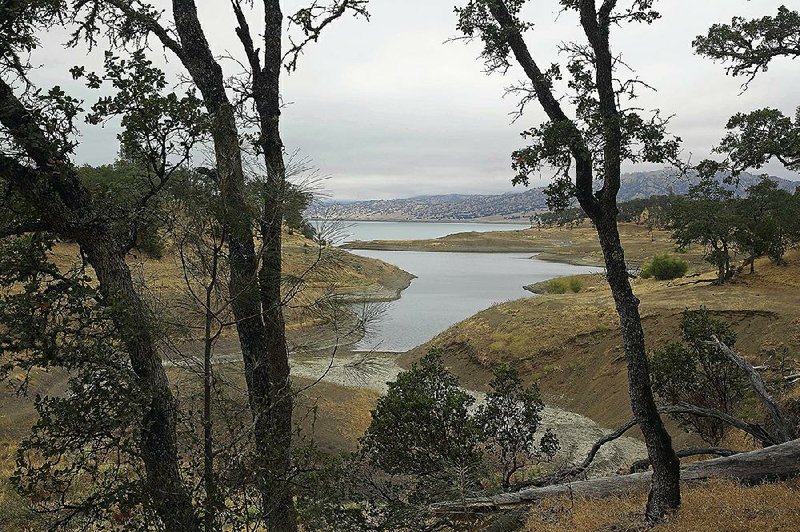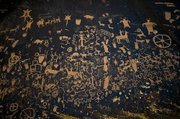BILLINGS, Mont. -- Interior Secretary Ryan Zinke said Thursday that he won't seek to rescind any national monuments established in the wilderness and oceans by past presidents. But he said he will press for some boundary changes, and he left open the possibility of allowing drilling, mining or other industries at the sites.
Twenty-seven monuments were put under review in April by President Donald Trump, who has claimed that millions of acres designated for protection by President Barack Obama were part of a "massive federal land grab."
If Trump adopts Zinke's recommendations, made in a report submitted to the White House, it could ease some of the worst fears of the president's opponents, who warned that public lands and marine areas could be stripped of federal protection.
But significant reductions in the size of the monuments or changes in what activities are allowed on them also could trigger fierce resistance, including lawsuits.
The Interior Department did not give specifics on Zinke's recommendations, instead releasing a report summary that described each of the 27 protected areas scrutinized as "unique."
Zinke said in an interview with The Associated Press that he had recommended changes to a "handful" of sites, including unspecified boundary adjustments, and suggested some monuments are too large. He would not specify his recommendations for specific sites, but he said in June that Utah's Bears Ears monument needs to be reduced in size.
Multiple individuals briefed on the decision told The Washington Post that the secretary had recommended reducing the size of at least three national monuments: Utah's Bears Ears and Grand Staircase-Escalante national monuments, as well as Oregon's Cascade-Siskiyou National Monument.
The White House said only that it had received Zinke's recommendations and is reviewing them.
Conservationists and tribal leaders responded with alarm, demanding the full release of Zinke's recommendations and vowing to challenge attempts to shrink any monuments.
Gene Karpinski, president of the League of Conservation Voters, called Zinke's review a pretext for "selling out our public lands and waters" to the oil industry and others.
Jacqueline Savitz, senior vice president of Oceana, which has been pushing for preservation of five marine monuments included in the review, said that simply saying "changes" are coming doesn't reveal any real information.
"A change can be a small tweak or near annihilation," Savitz said. "The public has a right to know."
A tribal coalition that pushed for the creation of the 2,100-square-mile Bears Ears monument on sacred tribal land said it is prepared to start a legal fight against even a slight reduction in its size.
The recommendations cap a four-month review based on a belief that the 1906 Antiquities Act had been misused by presidents to create oversize monuments that hinder energy development, grazing and other uses. The review looked at whether the protected areas should be eliminated, downsized or otherwise altered.
The review raised alarm among conservationists who said protections could be lost for ancient cliff dwellings, towering sequoia trees, deep canyons and ocean habitats.
But many western Republicans criticized such large protected areas as a distortion of the 1906 law's original intent.
In a call with reporters Thursday, House Natural Resources Committee Chairman Rob Bishop, R-Utah, said that "Congress never intended one individual to unilaterally dictate land management policies for enormous swaths of federal land."
"It's about how we protect our resources, not if we protect them," said Bishop, noting that Obama had applied his authority under the Antiquities Act to more than 550 million acres of land and sea. "That's 190,000 acres of land and water locked up for every day he was in office."
REACTION MIXED
Utah state Rep. Mike Noel, a Republican who has pushed to rescind the designation of Bears Ears as a monument, said he could live with a rollback of its boundaries.
He called that a reasonable compromise that would enable continued tourism while still allowing activities that locals have pursued for generations -- logging, livestock grazing and oil and gas drilling.
"The eco-tourists basically say, 'Throw out all the rubes and the locals and get rid of that mentality of grazing and utilizing these public lands for any kind of renewable resource such as timber harvesting and even some mineral production,'" Noel said. "That's a very selfish attitude."
Zinke did not say whether any monuments would be newly opened to energy development, mining and other industries Trump has championed.
But the former Montana congressman said public access for uses such as hunting, fishing or grazing would be maintained or restored. He also spoke of protecting tribal interests.
"There's an expectation we need to look out 100 years from now to keep the public land experience alive in this country," Zinke said. "You can protect the monument by keeping public access to traditional uses."
National monument designations are used to protect land revered for its natural beauty and historical significance. The restrictions aren't as stringent as those at national parks but can include limits on mining, timber-cutting and recreational activities such as the use of off-road vehicles.
U.S. Sen. Maria Cantwell, the top Democrat on the Energy and Natural Resources Committee, issued a scathing critique of the process the administration was using to scale back the designations.
"Teddy Roosevelt would roll over in his grave if he could see what Donald Trump and Ryan Zinke are trying to do to our national treasures today," the lawmaker from Washington state said. "Secretary Zinke's secret report to the president is the latest step in a rigged process to try and turn over our public lands to oil and gas companies."
Other sites that might see changes include Katahdin Woods and Waters, 136 square miles of forest of northern Maine, and Cascade Siskiyou, a 156-square-mile region where three mountain ranges converge in Oregon.
The marine monuments encompass more than 340,000 square miles and include four sites in the Pacific Ocean and an array of underwater canyons and mountains off New England.
Zinke previously announced that no changes would be made at six of the 27 monuments under review -- in Montana, Colorado, Idaho, California, Arizona and Washington.
In the interview, Zinke struck back against conservationists who had warned of impending mass sell-offs of public lands by the Trump administration.
"I've heard this narrative that somehow the land is going to be sold or transferred," he said. "That narrative is patently false and shameful. The land was public before, and it will be public after."
The monuments under review were designated by four presidents over the past two decades.
Zinke suggested that the same presidential proclamation process used to create the monuments could be used to enact changes.
Environmental groups contend the Antiquities Act allows presidents to create national monuments but gives only Congress the power to modify them. Mark Squillace, a law professor at the University of Colorado, said he agrees with that view but noted the dispute has never gone before the courts.
Conservative legal scholars have come down on the side of the administration.
No president has tried to eliminate a monument, but some have reduced or redrawn the boundaries on 18 occasions, according to the National Park Service.
Information for this article was contributed by Matthew Brown, Brady McCombs and Michael Biesecker of The Associated Press and by Juliet Eilperin and Darryl Fears of The Washington Post.
A Section on 08/25/2017


